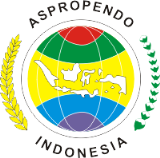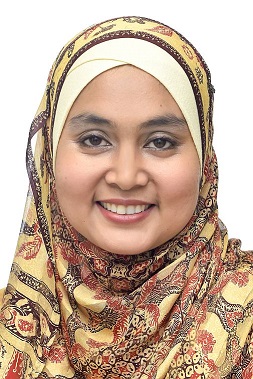DEVELOPMENT OF INTERACTIVE LEARNING MEDIA BASED ON CANVA FOR EDUCATION TO IMPROVE DIGITAL LITERACY SKILLS IN SOLAR SYSTEM MATERIAL IPAS PROJECT
DOI:
https://doi.org/10.23917/jpis.v35i1.10797Keywords:
Interactive learning media, canva for education, digital literacy, ipas project, addie modelAbstract
The background of this study is based on the low level of digital literacy among students, which is influenced by the lack of innovative learning media and the limited ability of teachers to develop attractive digital media. Canva for Education was chosen as a solution because it provides easy-to-access interactive design features and supports collaborative and creative learning. This research aims to develop interactive learning media based on Canva for Education to improve students' digital literacy skills in IPAS projects at vocational high schools (SMK). The contribution of this research is the development of an innovative project-based learning method that is relevant to educational needs in the digital era, where this research uses the ADDIE (Analysis, Design, Development, Implementation, Evaluation) development model to create interactive learning media. The research subjects were 33 students from class X AKL 3 at SMK Negeri 4 Klaten in the 2024/2025 academic year. The developed media was deemed highly suitable by subject matter experts (86%) and media experts (83%). Following implementation, the media received positive feedback from students and teachers, particularly regarding ease of use, increased motivation, and student engagement in learning. Effectiveness testing showed significant results, with an N-Gain score of 0.75 (high category) from pre-test and post-test scores. This indicates a substantial improvement in students' digital literacy skills after using the interactive Canva-based media. Overall, this study concludes that the interactive Canva for Education learning media is effective, practical, and suitable for supporting digital literacy in the IPAS project.
Downloads
References
Alfatih, A. M., Jannah, H., & Raharjo, R. (2024). Pemanfaatan Aplikasi Canva sebagai Media Pembelajaran Multimedia Interaktif di Madrasah Ibtidaiyah. SITTAH: Journal of Primary Education, 5(2), 128-141.
Anaperta, M., Turahma, W., Rahmayani, E. P., & Saputra, F. (2023). Pengembangan Metode PJBL Menggunakan Media Interaktif Berbasis (Canva) Untuk Siswa Kelas XII RPL SMKN 2 Padang. Journal of Computer Science and Information System (JCoInS), 4(4), 212-218.
Anggraeni, A. D., & Pentury, H. J. (2022). Empowering Students’ 21st Century Skills Through Canva Application. Jurnal Kependidikan: Jurnal Hasil Penelitian dan Kajian Kepustakaan di Bidang Pendidikan, Pengajaran dan Pembelajaran, 8(1), 50-57.
Astuti, M., Arifin, Z., Mutohhari, F., & Nurtanto, M. (2021). Competency of Digital Technology: The Maturity Levels of Teachers and Students in Vocational Education in Indonesia. Journal of Education Technology, 5(2), 254-262.
Bhat, R. A. (2023). Digital Literacy Development: Assessing The Efficacy of Online Learning Platforms in Enhancing Students’ Information Fluency. International Journal of Social Science, Educational, Economics, Agriculture Research and Technology (IJSET), 2(9), 597-599.
Efendi, R., Hasibuan, A. P. G., &Siregar, P.S.(2023). Canva application-based learning media on motivation and learning outcomes. International Journal of Elementary Education, 7(2), 342-352.
Hapsari, G. P. P., & Zulherman, Z. (2021). Pengembangan Media Video Animasi Berbasis Aplikasi Canva untuk Meningkatkan Motivasi dan Prestasi Belajar Siswa. Jurnal Basicedu, 5(4), 2384–2394. https://doi.org/10.31004/basicedu.v5i4.1237.
Hidayat, M. T. (2022). Pengaruh Media Pembelajaran Audio Visual Terhadap Peningkatan Hasil Dan Minat Belajar Siswa Kelas X TKJ Pada Mata Pelajaran Desain Grafis di SMK Mahyal Ulum Al-Aziziyah. Thesis, Universitas Islam Negeri Ar-Raniry. https://repository.ar-raniry.ac.id/id/eprint/27635/.
Hutapea, N. S., Manullang, Z. P. J., & Hartati, R. (2024). Enhancing Student Engagement and Academic Performance Through Digital Literacy: A Transformative Approach in Canva Application. Fonologi: Jurnal Ilmuan Bahasa dan Sastra Inggris, 2(4), 154-170.
Maladerita, W., Barlian, E., Desyandri, D., Ananda, A., Darmansyah, D., & Zikri, A. (2024). Pengembangan Bahan Ajar Bermultimedia Interaktif dengan Discovery Learning pada Mata Pelajaran IPAS di Sekolah Penggerak. Jurnal Inovasi Pendidikan dan Pembelajaran Sekolah Dasar, 8(1), 27-38.
Masrifah, A., & Setyasto, N. (2024). Android-Based Articulate Storyline Interactive Media in IPAS Subjects. Jurnal Penelitian Pendidikan IPA, 10(6), 2978-2988.
Menggo, S. (2024). Reflection on Students' Competence and Challenges in Achieving Digital Media Literacy in English Learning. English Education, 11(1), 49-60.
Naufal, H. A. (2021). Literasi Digital. Perspektif, 1(2), 195-202.
Nurmawati, N. (2025). A Use of Interactive Media Based on The Canva Application in Learning PAI at SMPN 1 Stabat Langkat District. Rabbani: Jurnal Pendidikan Agama Islam, 6(1), 40-55.
Oktaria, S., Susanti, R., & Suratmi, S. (2025). Analisis Kebutuhan Pengembangan Multimedia Interaktif Berbantuan Canva Untuk Meningkatkan Hasil Belajar Siswa Materi Struktur Lapisan Bumi Kelas VIII. SOCIAL: Jurnal Inovasi Pendidikan IPS, 5(1), 210-218.
Purmadi, A., Muzakkir, M., & Astuti, E. R. P. (2022). Developing M-Learning Applications to Support Digital Literacy of Vocational High School Students. Jurnal Inovasi dan Teknologi Pembelajaran, 9(3), 291-301.
Rana, D.G., & Kanwar (2020). Digital Literacy. Encyclopedia of Education and Information Technologies. https://doi.org/10.4018/978-1-4666-1852-7.
Reddy, P., Sharma, B., & Chaudhary, K. (2020). Digital literacy: A Review of Literature. International Journal of Technoethics (IJT), 11(2), 65-94.
Sari, A. P., & Rofiki, I. (2024). Efektivitas Media Pembelajaran Interaktif Berbasis Canva terhadap Hasil Belajar Bahasa Inggris Siswa Kelas 1. Ed-Humanistics: Jurnal Ilmu Pendidikan, 9(01), 1-10.
Sudirman, I. N., & Wijaya, I. W. A. (2024). Analisis Kebutuhan Guru terhadap Bahan Ajar Interaktif IPAS Berbasis Tri Hita Karana di Sekolah Dasar Negeri 2 Batur. Morfologi: Jurnal Ilmu Pendidikan, Bahasa, Sastra dan Budaya, 2(6), 240-244.
Sugiyono. (2019). Metode Penelitian Kuantitatif, Kualitatif, dan R&D. Bandung: Alfabeta.
Susanti, D. A., Sultonurohmah, N., & Purwitasari, E. D. (2024). The Effectiveness of Using Canva Application as A Science Learning Media in Elementary Schools. BASICA; Journal of Primary Education, 4(2), 89-100.
Syah, M. B., Asrowi, A., & Ardianto, D. T. (2019). Permasalahan dan Peluang Pendidikan di SMK pada Era Teknologi Digital. Teknodika, 17(2), 85-93.
Yusdarina, Y., & Sakti, I. (2021). Development of Interactive Online-Based Teaching Materials for Physics Subjects in Class X Vocational Schools. JPF (Jurnal Pendidikan Fisika) Universitas Islam Negeri Alauddin Makassar, 9(2), 145-150.
Downloads
Submitted
Accepted
Published
Issue
Section
License
Copyright (c) 2025 Jurnal Pendidikan Ilmu Sosial

This work is licensed under a Creative Commons Attribution 4.0 International License.













